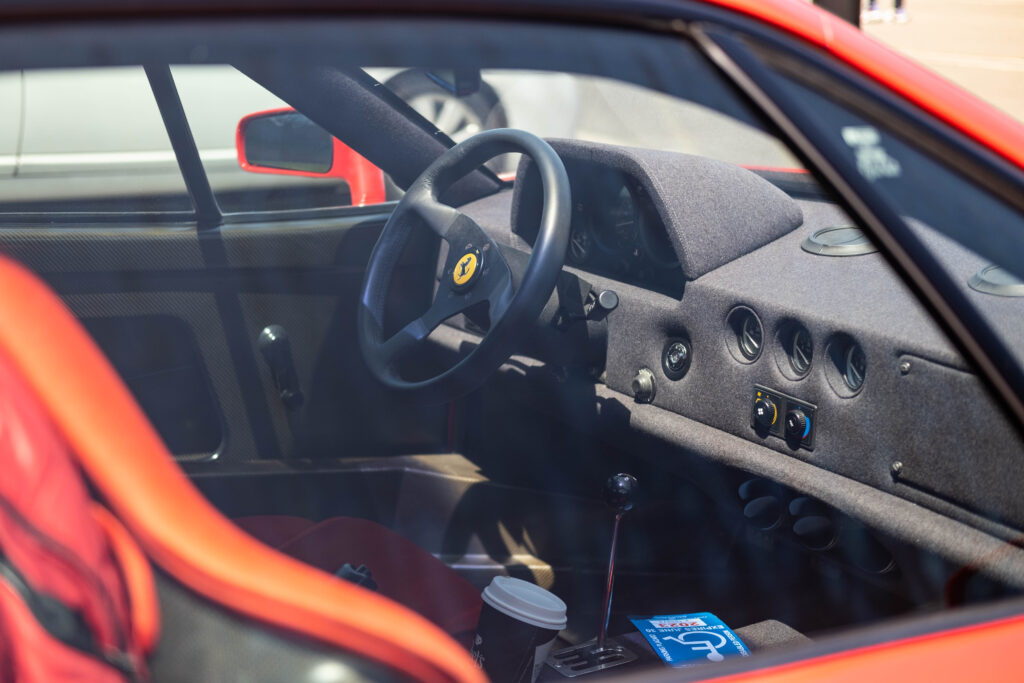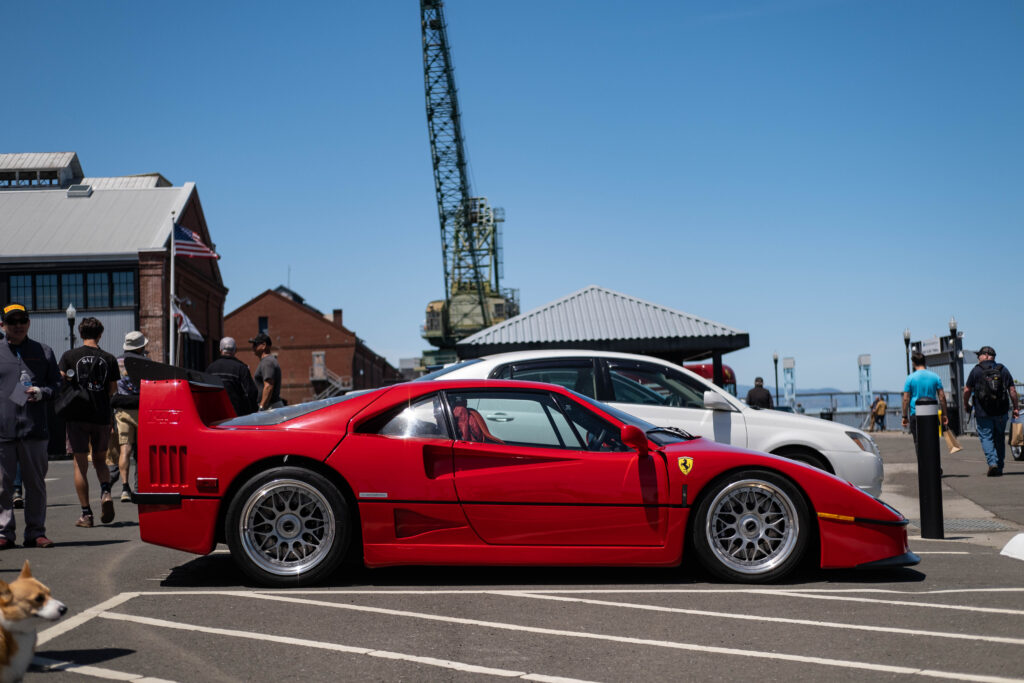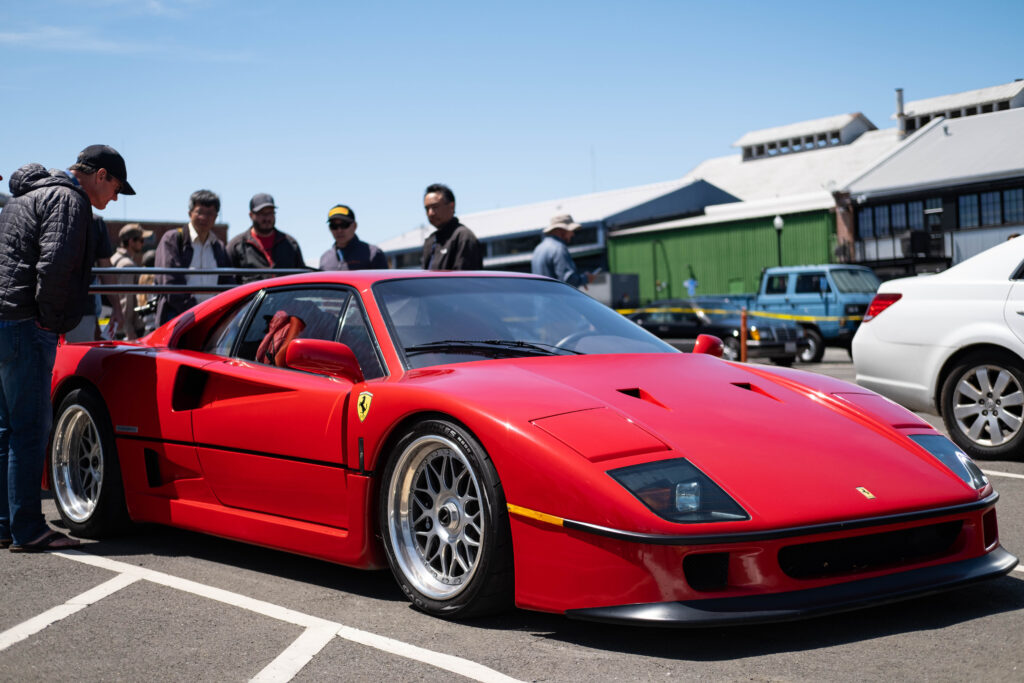This week, we turn our focus to the Ferrari F40—another childhood hero of mine. I have been fortunate enough to see a few at different events. While I’ve always admired it, I never dug deeper to know the “why’s” or “how” this legend was born.
Origins: The Group B Era
Our story begins with the Ferrari 288 GTO, the precursor to the F40. After the Group B series was canceled, all the expertise and technology were repurposed to create something extraordinary—the F40. But what was the Group B series, and why was it canceled? I’m glad you asked.
The Group B series ran from 1982 to 1986 and was a rally racing series known for minimal restrictions. Homologation required only around 200 units, and cars boasted 400 to 600 HP, featuring cutting-edge technology like 4WD and turbocharging. However, the conditions were extremely dangerous for both spectators and drivers, which ultimately led to its downfall.
While Group B was primarily a rally series, it was initially intended for both rally and circuit racing, similar to how Indy combines circuits and ovals. Its loose regulations allowed the development of some of the best rally cars ever, marking what many consider the golden era of rally racing. Brands such as Audi, Ford, Lancia, and Peugeot dominated this short-lived but legendary series.
To give you an idea of its legendary status, here are five standout cars that emerged from Group B:
- Audi Quattro S1 E2
- Lancia Delta S4
- Peugeot 205 T16
- Ford RS2000 (I mean, come on!)
- MG Metro 6R4
Add the Ferrari 288 GTO to this list, and you’ve got nothing but heavy hitters.
The Death of Group B
Why was it canceled? The regulations proved too relaxed, and safety took a backseat. Tragedies ultimately sealed its fate.
On March 5, 1986, during the Rally de Portugal, Joaquim Santos lost control of his Ford RS2000, crashing into the crowd. Four people were killed, including children, and 32 others were injured. Despite this tragedy, the series continued.
Just two months later, on May 2, 1986, Henri Toivonen and his co-driver, Sergio Cresto, died when their Lancia Delta S4 plunged into a ravine, exploded, and caught fire. This second incident prompted the FIA to pull the plug on Group B, forever cementing its place in motorsport history.

The Ferrari 288 GTO
The Ferrari 288 GTO, based on the Ferrari 308 GTB, was developed exclusively for Group B racing. It featured a 2.9-liter twin-turbocharged V8 engine. Ferrari produced 272 road units between 1984 and 1987, but it never actually raced in Group B due to the series’ cancellation.
So what did Ferrari do? They adapted. Ferrari transformed the 288 GTO into a road car by adding amenities like leather seats, electric windows, and AC. The 288 GTO became a collector’s edition, adding to its legend.
Ferrari even took things further by creating the 288 GTO Evoluzione, a more extreme version solely for racing. This development laid the groundwork for what came next—the F40.
The Birth of the F40
1987 marked Ferrari’s 40th anniversary. To celebrate, Enzo Ferrari commissioned the F40—a driver’s car focused purely on performance. Think of it as the 1987 equivalent of a modern Porsche 911R. The goal was to push the limits of road legality.
Finished in just 13 months, thanks to lessons learned from the 288 GTO and Evoluzione, the F40 featured a lightweight chassis with a tubular steel spaceframe bonded to Kevlar panels. Extensive use of carbon fiber in the doors, hood, and trunk lid further reduced weight.
Powered by a 2.9-liter twin-turbocharged V8 producing 478 HP, the F40 was the first production car to break the 200-mph barrier. It accelerated from 0 to 60 in just 3.8 seconds—a groundbreaking feat in 1987. With its advanced aerodynamics, including the iconic rear wing, the F40 was Ferrari’s best car to date and a marvel of engineering.

The Competition: Porsche 959
While the F40 deserves its own spotlight, its rivalry with the Porsche 959 adds context. Both cars showcased cutting-edge technology but took different approaches. The 959 emphasized engineering feats with adaptive suspension, ABS, and variable AWD, while the F40 focused on lightweight construction using composites and tubular space frames.
In terms of performance, the F40 had the edge. It boasted a higher top speed (201–202.5 mph vs. the 959’s 197 mph) and was significantly lighter (1,100–1,200 kg vs. 1,530 kg). The F40’s 478 HP also outpaced the 959’s 450 HP. With closer weight distribution and superior cornering, the F40 had an edge on the track. That said, the 959’s technology-heavy approach deserves its own spotlight.
Challenges in Development
Developing the F40 wasn’t without hurdles. Enzo Ferrari demanded it be completed in just 13 months—a timeline that pushed the team to its limits.
Handling was one early issue. Prototypes required extensive testing to refine driving characteristics. The powerful twin-turbocharged engine also presented challenges in managing power delivery for road use.
Weight reduction was another focus. The F40 achieved this through materials like Kevlar and carbon fiber, but working with these new materials required rethinking manufacturing processes. Stability at high speeds also demanded extensive wind-tunnel testing.
Finally, drivability posed challenges. With no power steering, power brakes, or electronic assists, the F40 demanded serious skill behind the wheel. Turbo lag added to the difficulty, requiring careful tuning to make it manageable.

Legacy and Impact
The Ferrari F40 set a new benchmark for performance cars. Competing directly with the Porsche 959 only enhanced its legendary status. Its raw, motorsport-focused design made it a marvel of engineering and an icon for car enthusiasts.
Despite its grim origins, born from the tragic end of Group B, the F40 stands as a celebration of Ferrari’s 40 years of innovation and excellence. It continues to captivate hearts and minds.
What’s Your Hero?
The F40 is my hero, but what about you? Which car from your childhood left the biggest impression? Share your favorites!
Thanks for stopping by,
DL
Discover more from 3DLANES
Subscribe to get the latest posts sent to your email.
